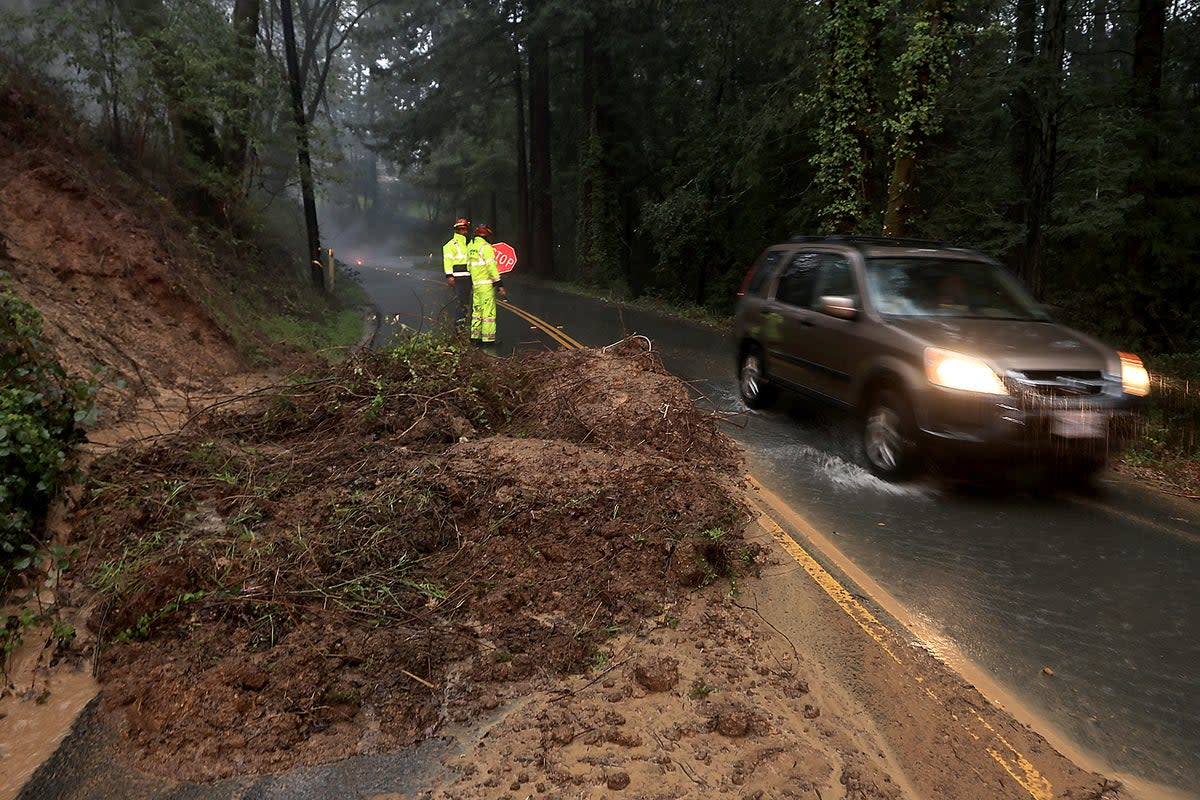Biden declares state of emergency for California as severe rains slam snow-hit state

President Joe Biden has approved a state of emergency and ordered federal assistance to support California after a massive storm slammed into the state on Friday.
The huge atmospheric river is dropping excessive amounts of rain and raising the threat of widespread flash flooding and rapid runoff.
Evacuation warnings were issued in advance for various foothill and mountain communities that are prone to flooding and mudslides.
An evacuation order was in place for a small number of central coast residents who live below a levee near Oceano, San Luis Obispo county. Totals of two to four inches of rain have been observed with the Rocky Butte peak in San Luis Obispo County receiving nine inches.
The latest atmospheric river, dubbed a “Pineapple Express” as it drags subtropical moisture from over the Pacific, is likely to significantly impact northern and central parts of the state.
“California is deploying every tool we have to protect communities from the relentless and deadly storms battering our state,” said Governor Gavin Newsom.
“In these dangerous and challenging conditions, it is crucial that Californians remain vigilant and follow all guidance from local emergency responders.”
It is the latest in a wave of extreme weather events to impact California since the beginning of the year.
Nine atmospheric rivers have deluged California so far in 2023 and in late February, a blast of arctic air delivered record snowfall to mountainous areas.
On Friday, high-elevation places in northern California and the Sierra Nevada, will see more heavy, wet snow, according to the National Weather Service (NWS).
The snowpack is so vast at the highest elevations that it should be able to absorb the rain, NWS said. Mountain communities in California have seen as much as 10 feet of snow from the rare blizzard conditions.
California’s Sierra Nevada snowpack, which provides about a third of California’s water supply, is more than 180 per cent of the 1 April average, when it is historically at its peak.
However, elevations below 4,000 feet will see melting and runoff, NWS reported. Considerable flooding impacts are possible across portions of the central coast and San Joaquin Valley.
VIDEO: Catastrophic flash flooding in Springville, California. A PDS (particularly dangerous situation) FLASH FLOOD EMERGENCY 🚨 is in effect for the region. More rain on the way. #cawx @JimCantore @weatherchannel @WeatherNation @foxweather VIDEO NOT MINE credit Brian Duke on FB pic.twitter.com/FEoG9otRgW
— Michael Gibson (@Geekflanka) March 10, 2023
Creeks and streams in the foothills of the Sierra Nevada will be the most vulnerable to flooding from rain and snowmelt.
Video shared by The Weather Channel on Friday showed the roaring Kern River tearing through properties.
There will likely be further impacts from the depth and weight of snow which has already trapped residents in their homes, downed powerlines and led to roof collapses.
The California Department of Transportation advised people to limit non-essential travel due to the dangers.
“There’s a risk of flooding, rock and mudslides and heavy snowfall, increasing the likelihood of road closures and avalanches,” CalTrans said, in a statement.
Severe and widespread flash flooding is expected from the storm over the next 24 hours. “Areas that normally do not experience flash flooding will flood,” NWS warned. “Lives and property are in great danger from Friday into Saturday morning.”
Some 15 emergency shelters were opened across nine counties, according to the California Governor’s Office of Emergency Services.
The precipitation is expected to ease off later on Saturday but California is not out of the woods yet. Another atmospheric river is forecast for early next week, according to weather reports, with another two possibly on the way days later.
AP contributed to this report

